|
Acadia National Park preserves approximately 50,000 acres along the mid-section of the Maine coast, containing the tallest mountains on the eastern seaboard, an iconic rocky Maine coastline, and subalpine rocky summits. The park’s mountains, lakes, streams, wetlands, forests, meadows, and coastlines contribute to the diversity of plants and animals found here. Acadia is within the transition zone between southern and northern forests, and as a result, hosts plant species and communities currently at the edge of their geographic range. The park’s location along the Atlantic flyway makes it an important resting and feeding place for migrating birds and bats. During your visit, you join a legacy of centuries of interconnectedness between people and this landscape. For more than 100 years, a tradition of scientific investigation has joined a millenium of traditional ecological knowledge to form the bedrock of our understanding of Acadia's natural world. Help protect Acadia's natural wonders by following all Leave No Trace principles during your visit and reducing your carbon footprint as you explore. Animals: A Place Called HomeAnimals call Acadia 'home.' Their lives are inevitably wrapped up in ours as we move through the places they eat, sleep, and raise their young. Animals inhabit all of Acadia, from the smallest microorganism to the falcons and eagles that fly above the park's mountain peaks, and in every ecosystem in between. With a keen eye you can always be watching wildlife from a safe distance during your visit to Acadia. Simple acts like using long lenses when birdwatching can go a long way to keeping animals safe. Learn more about their remarkable lives and how you can protect Acadia's animals.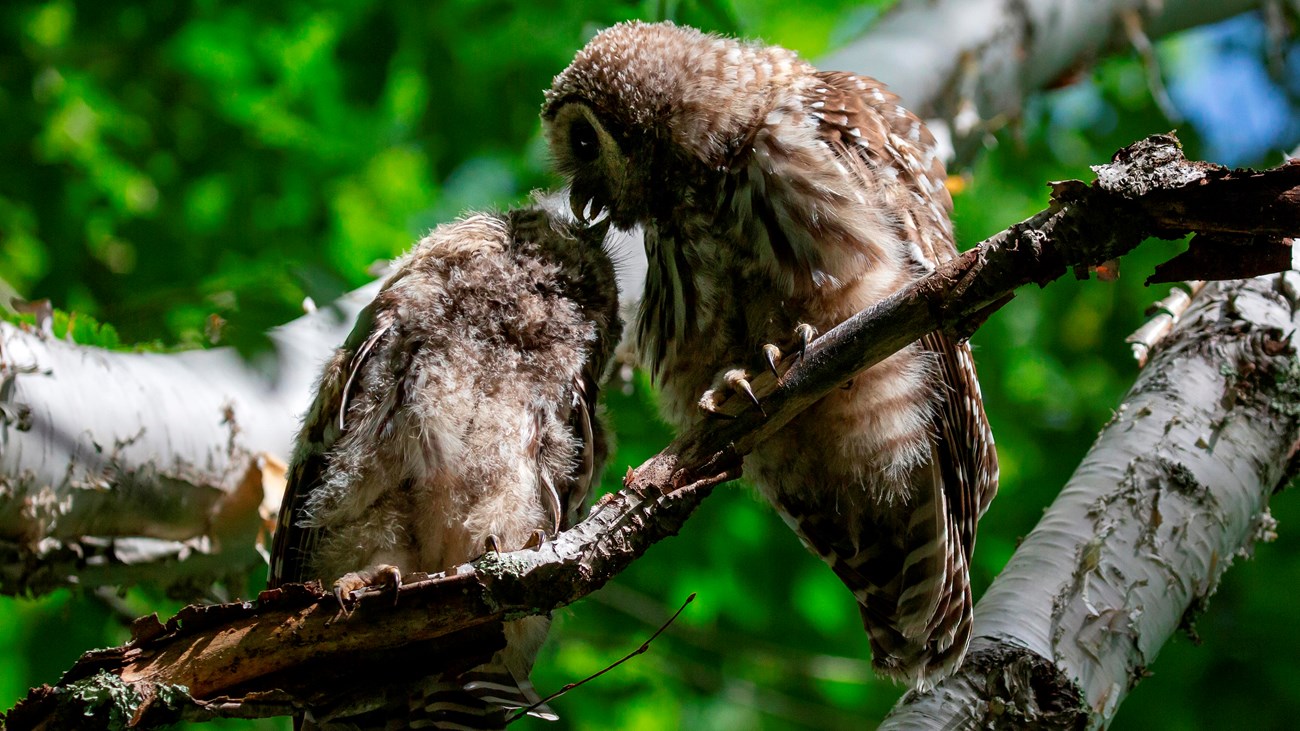
Animals
Acadia is home to a diversity of wildlife, from microorganisms living in tidepools to larger animals on land and in water. 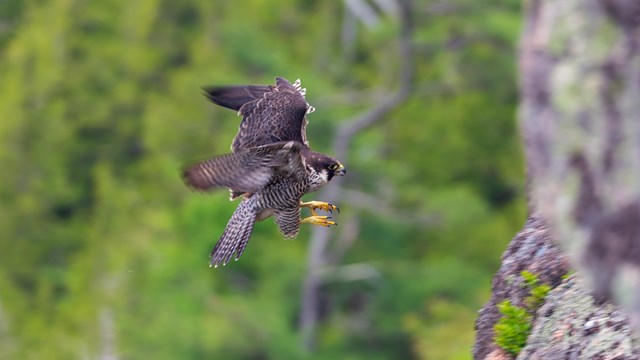
Peregrine Falcons
Learn more about how peregrine falcons, the fastest animal on earth, came back from the brink of extinction. 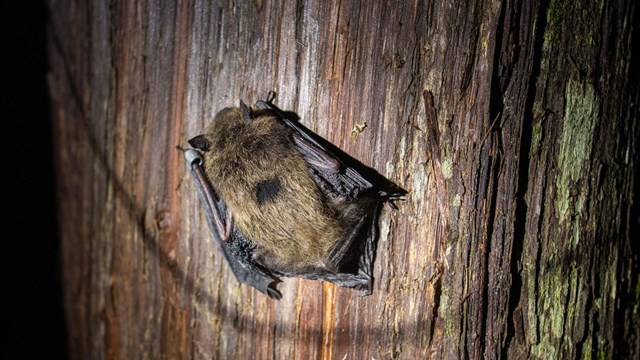
Bats
These small, often misunderstood animals lead incredible lives. Learn about them and the many threats that have pushed them to brink. 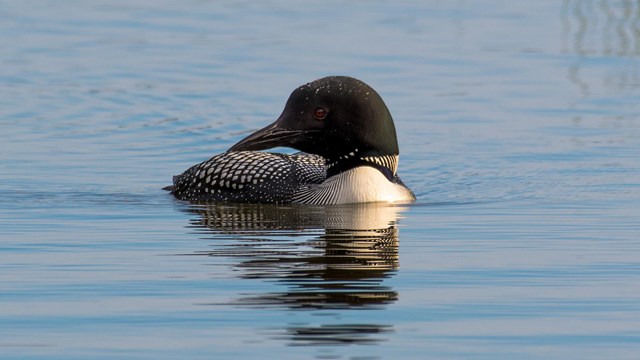
Loons
Learn about the remarkable lives of the loons that dot the lakes and ponds of Acadia. 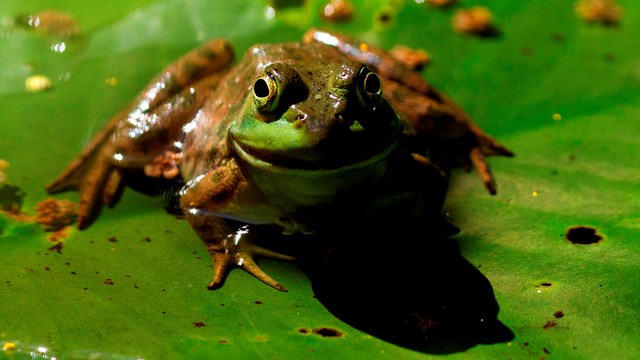
Amphibians and Reptiles
Frogs, snakes, turtles, and salamanders species in Acadia. 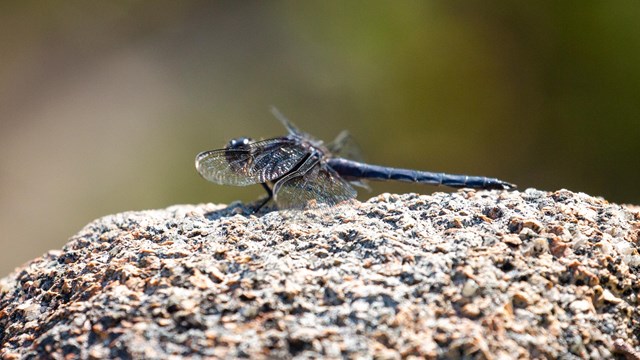
Invertebrates
Learn about invertebrates in the air, on land, and beneath the water. 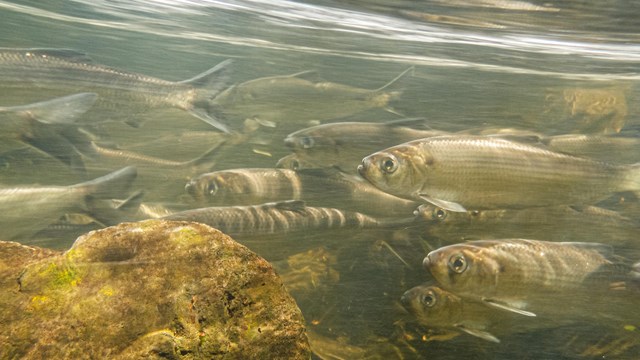
Fish
Inhabitants of Acadia's many lakes, ponds, and streams. Plants: The Green KingdomThere are over 1,000 different types of plants in Acadia. As generations of humans worked these woodlands and waters and waterfronts, plants formed the foundation of their survival. On land, low-to-the-ground plants such as mosses, grasses, ferns, and lie beneath larger plants such as trees and shrubs. Joining these plants on the ground are lichens and mushrooms which are not true plants, but organisms that are unique in the natural world. In tidepools, saltmarshes, and on the coast, marine algae, seaweed, and other saltwater plants rise and fall with the tides. You can visit the Wild Gardens of Acadia for an upcolose look at native plants or join a ranger for one of our many guided walks.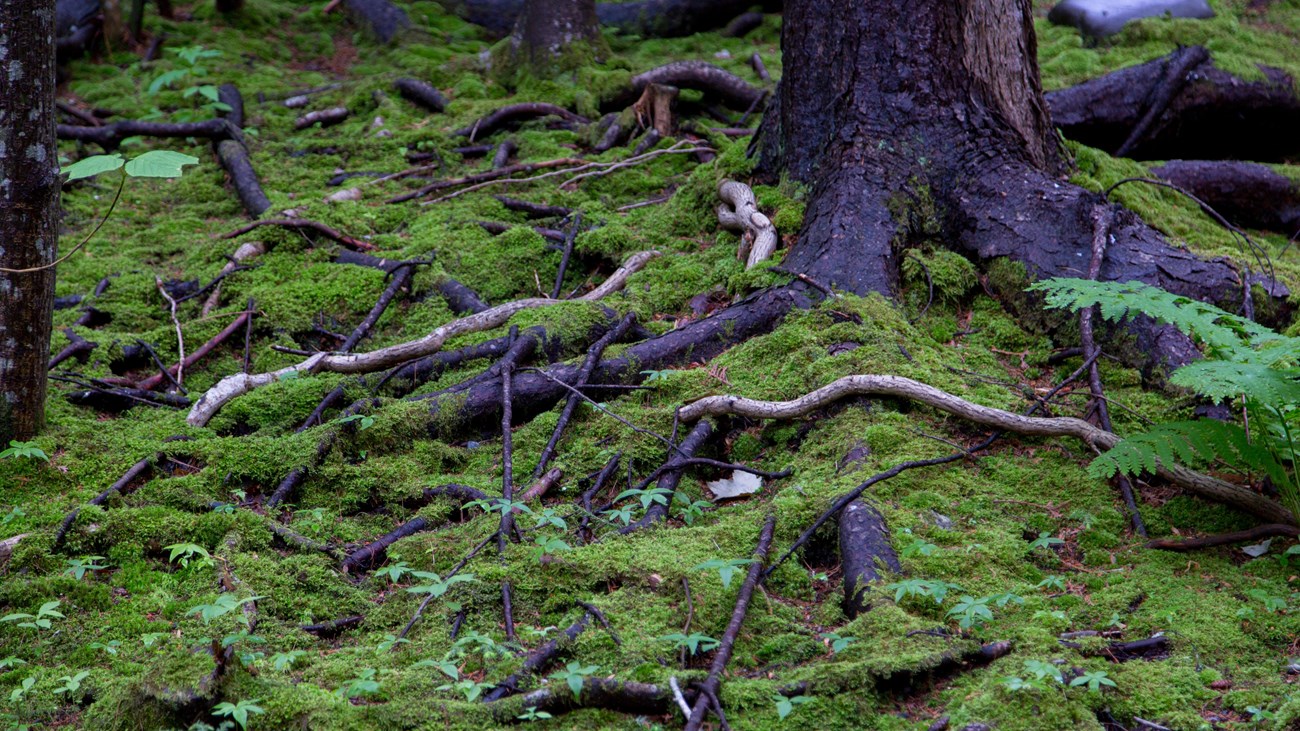
Plants
The diversity of Acadia National Park is reflected in its plant life; more than 1,100 plant species are found here. 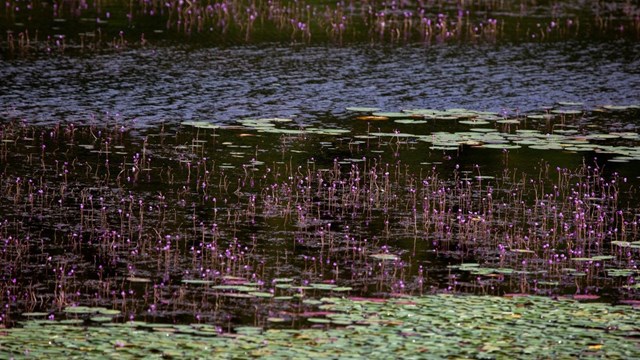
Freshwater Plants
Life abounds in the serene waters of Acadia’s lakes, ponds, and streams. From waterfowl to fish, wildlife depends on aquatic vegetation. 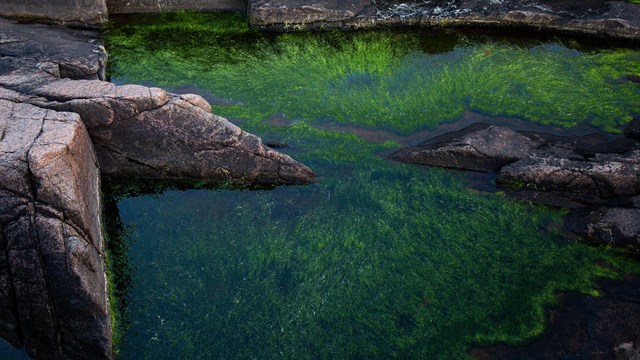
Saltwater Plants and Marine Algae
Learn more about the remarkable life of plants that thrive in Acadia's saltwater environments including tidepools. 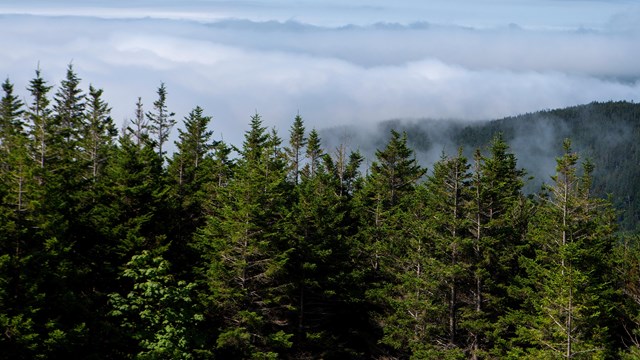
Conifers: Evergreen Trees and Shurbs
Cone bearing plants with dark green, needle like leaves are a prominent feature of the Acadia landscape. 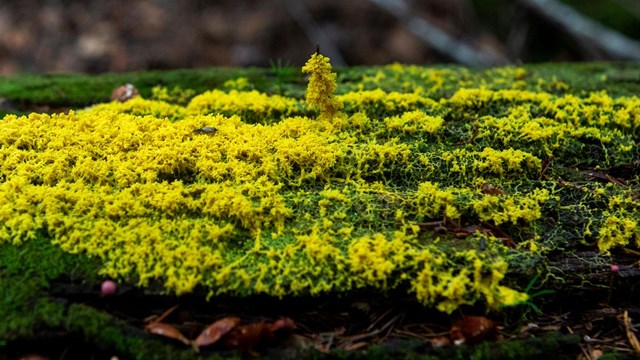
Mosses
Get a close up look at this class of plants that carpet moist areas such as rocks, trees, and along stream beds. 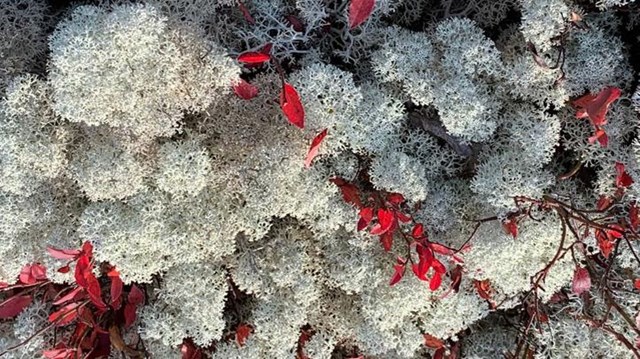
Lichen
Not quite a plant, not just a fungus, learn more about these unique organisms that paints so much of Acadia's landscape. 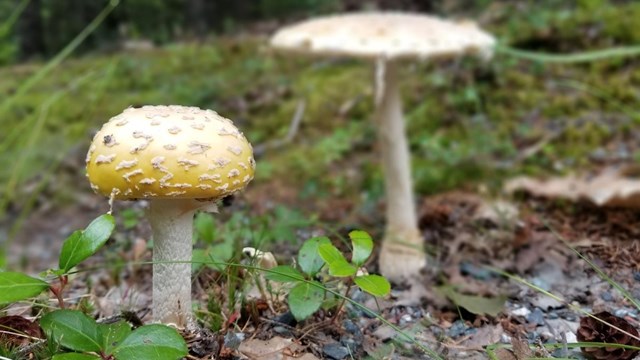
Mushrooms & Other Fungi
Driving all the biodiversity we see above ground, from the trees to wildflowers, is an underground web of fungal life. Ecosystems: From Summit to SeaTaken all together, the land and sea and the plant and animal life form unique natural environments called ecosystems. Along with geologic features like glacial erratics and cobblestone beaches, these ecosystems are Acadia. It is a place forged in the fire of ancient volcanoes and carved by ice. Acadia is rarely flat ground, from the sculpted granite mountains with summits and cliffs to the glacially-scoured lake beds and stream valleys. At the base of the mountains, the land is dotted with wetlands or continues it slope down to rocky headlands that have been undergoing a ongoing assault by the weather and the sea since their formation.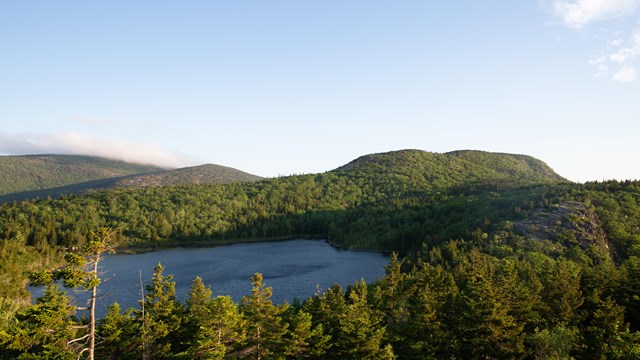
Mountains
Acadia is home to more than 20 mountains that rise from the sea and comprise much of Mount Desert Island. 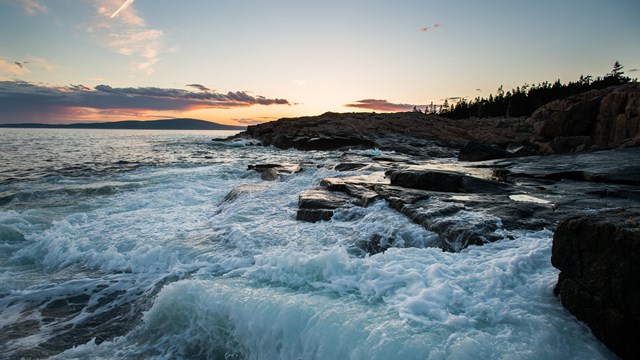
Coasts and Rocky Shorelines
Acadia protects nearly 64 miles of coastline on Mount Desert Island, Schoodic Peninsula, Isle au Haut, and other islands. 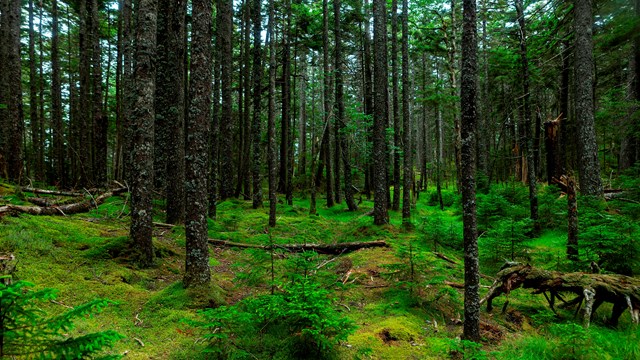
Forests
Acadia is blanketed with forests and woodlands that are situated in the transition zone of two ecoregions. 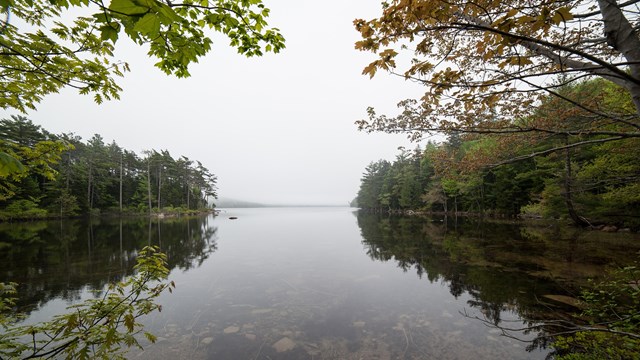
Lakes and Ponds
Lakes and ponds add shimmering contrast to Acadia's forested and rocky landscape. 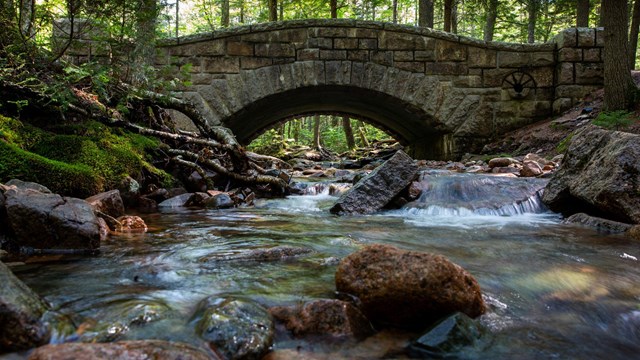
Streams and Watersheds
Learn about the running waters that provide life to wildlife, plants, and humans in Acadia National Park. 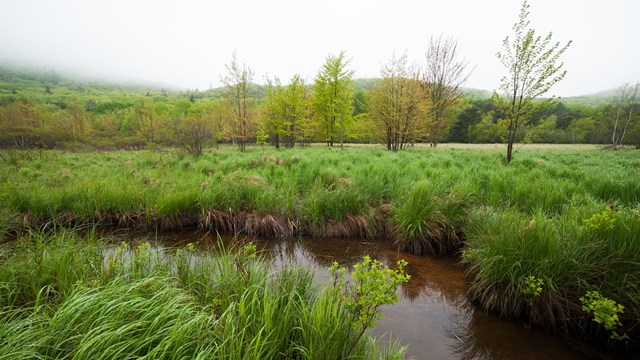
Wetlands, Marshes and Swamps
All classes of wetlands (swamps, marshes, and bogs) are found within the park. Enjoy the View: Night Skies and Scenic ViewsAcadia possesses remarkably dark skies for its proximity to Portland, Boston, and New York. The Milky Way dazzles visitors and reminds us just how large our “home” galaxy truly is. When the moon is full, the light it reflects from the sun is so bright it can cast a glow across the ocean. During the day, both the motor road system and the (non-motorized) carriage road system at the park were carefully laid out by prominent landscape architects to take advantage of spectacular views. From the top of the mountains or on one of the park's many historic hiking trails, enjoying the view is one of the key experiences in Acadia. Both of these incredible Acadia visual experiences are constantly under threat from light pollution and air pollution. Learn more about what can do to protect the view.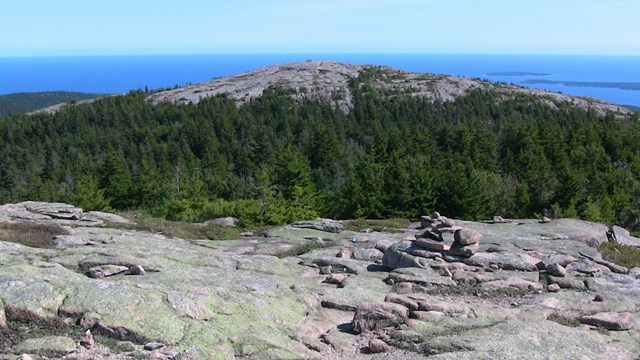
Scenic Views and Viewsheds
Learn about the natural and historically designed scenic views in Acadia as the lengths scientists are going to to protect them. 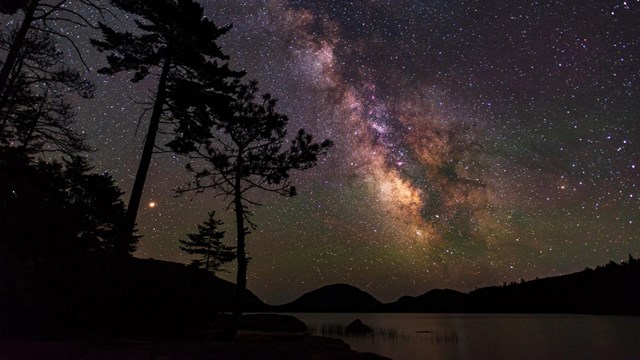
Acadia's Night Skies
Acadia National Park possesses remarkably dark skies for its proximity to Portland, Boston, and New York. Environmental ThreatsClimate change is rapidly changing Acadia's environment. Rising temperatures, warming waters, rising seas, and extreme weather events are increasing environmental stress leaving plants, animals, and ecosystems more suceptable to damage, as well as pests and disease. Among the greatest environmental challenges facing Acadia National Park is the presence and threat of invasive species. Non-native species, especially those considered invasive plants or invasive animals, threaten communities of native plants and animals across the United States. Located along the mid-coast of Maine, Acadia is downwind from large urban and industrial areas in states to the south and west. Periodically, high concentrations of air pollutants blow into the park from these areas and create hazy views and unsafe breathing conditions. Coupled with overtourism, the environment of Acadia is threatened on various fronts. Federally threatened or endangered species are on the tip of the spear. You can help protect Acadia during your visit by following all posted signs and regulations, riding the Island Explorer or carpooling, and following Leave No Trace principles. Learn more about the environmental theats that face Acadia National Park.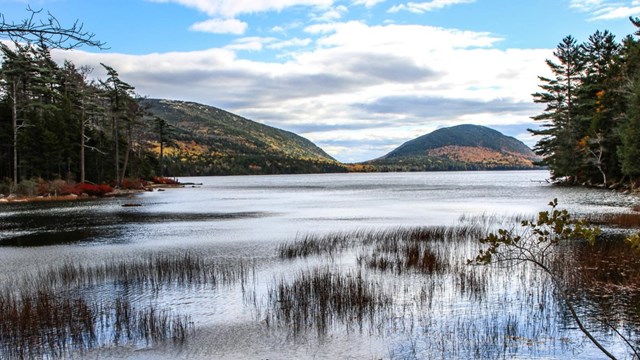
Climate Change
As national parks and green spaces everywhere experience large scale climate change, what do we stand to lose? 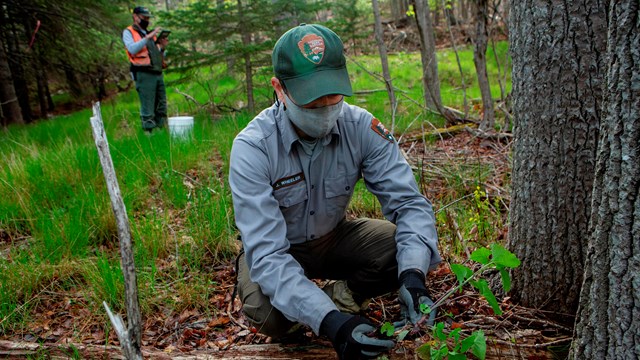
Invasive Plants
Invasive plants threaten Acadia's native ones. Learn more about these alien invaders and the steps park staff take to keep them at bay. 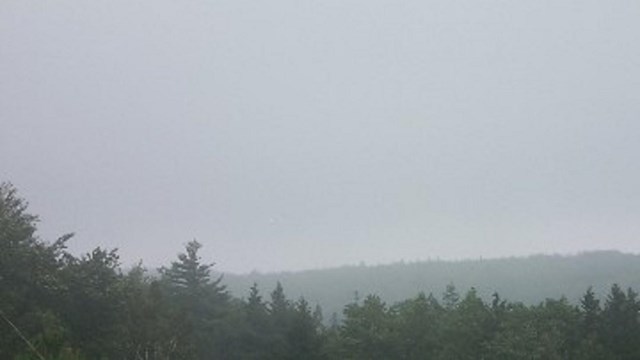
Air Pollution and Visibility
Acadia is deeply involved in the National Park Service's comprehensive air resources management program. 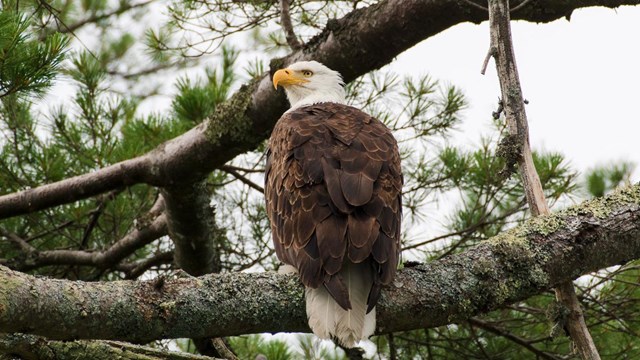
Threatened & Endangered Species
Learn more about the federally and state listed endangered and threatened species managed by Acadia National Park. How Does It Work?: Natural Processes and ConceptsBehind the beauty of Acadia is a fascinating sets of processes at work. The geologic history of Acadia National Park stretches back in time through millions of years to the formation of the oldest rocks on Mount Desert Island and continues to the present with the persistent forces of wind and weather which cause erosion. Evidence of this rich geologic past can be seen across the island, along rocky shorelines and atop windswept mountains. The tides shape Acadia on their twice daily rise and fall. Wildland fire has shaped the natural disturbance of the plants and animals of Acadia from the earliest lightning strike to more recent human activity for agriculture and fire prevention. The result of all these processes at work is an Acadia that is rich in biodiversity - the collective plant, animal, and microbiotic world.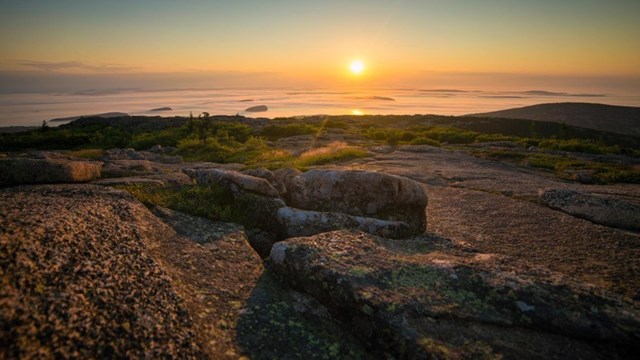
Geology
Acadia's landscape tells the tale of a time when fire and ice covered these lands. 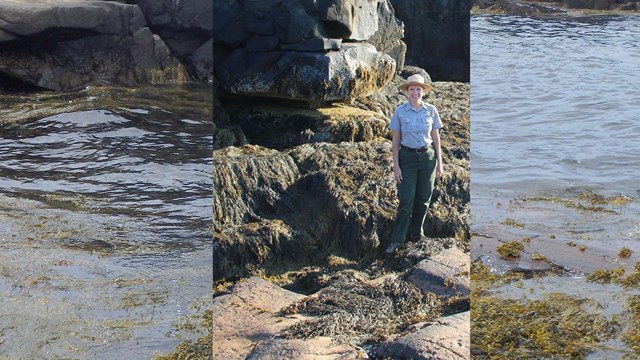
Tides
The twice daily tides is caused by the gravitation pull of the moon. Learn more about this fascinating natural process. 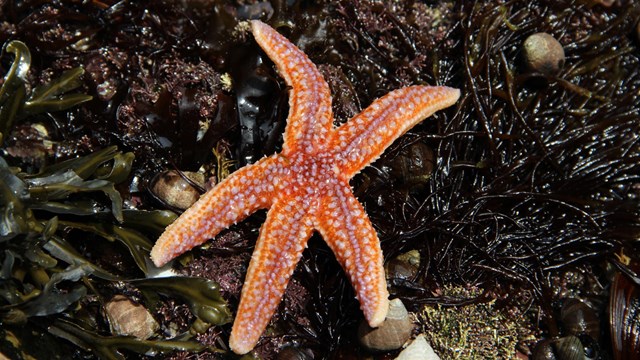
Biodiversity
Learn about the abundance of life at Acadia known as biodiversity. 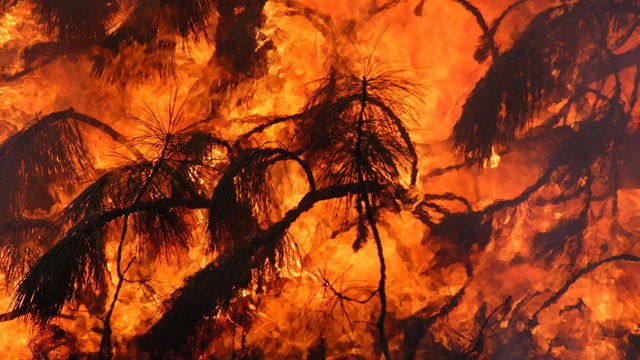
Natural Disturbances
Learn how fire, weather, water, earthquakes and other natural disturbances dramatically change the landscape. 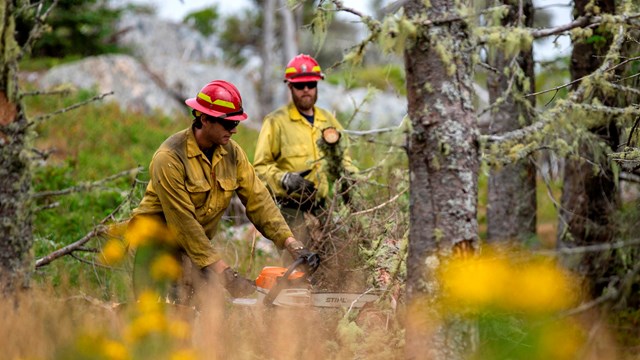
Wildland Fire
The fire management program at Acadia National Park performs a full range of wildland fire management operations and services. 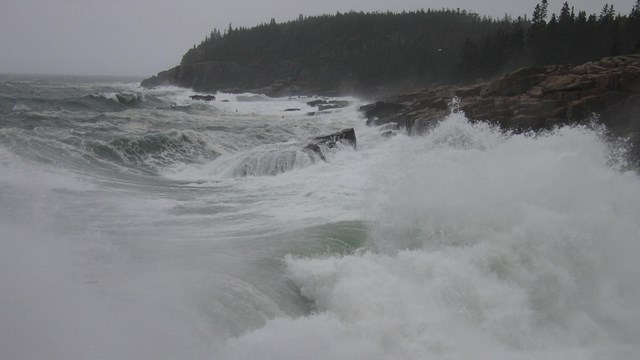
Erosion: Wind, Water & Weather
Learn about the soft and hard forces that over time erode the Acadia landscape including wind, water, and weather All Species ListYou can see a complete list of species and other reports on the National Park Service Integrated Resources Management Application. |
Last updated: November 1, 2023
